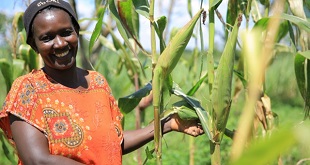
By Andrew M. Mwenda
After charging Agaba and Komakech with murder, will KCCA be able to bite again?
The near unanimous public condemnation of former KCCA director of planning, George Agaba and his bodyguard, Santos Komakech has caused them to be charged with murder before investigation. Their crime was video recorded yet most commentators on this subject have not cared to watch the entire video closely. More critically, the cameraman focused almost entirely on Komakech and ignored the action to which this police officer was reacting i.e. a large mob of people wielding sticks, an axe, iron bars and stones. The mob was using these instruments to lynch KCCA officers.
I have watched the 19 minutes video that NTV gave me. It shows there was clear and immediate danger to the lives of Agaba, Komakech and all the KCCA officers at the scene. It shows the violence began after Agaba and his KCCA members had finished their work and were walking to the car to drive away when a woman grabbed a stick from one of the KCCA officers and began to assault him. A man with an axe and another with an iron bar joined her. Others can be seen in the video picking stones. They surrounded the KCCA officials and began beating them. They threatened Agaba. It was in the heat of the moment that Agaba pulled a gun from the car and, because he had little physical space to cock it, gave it to Komakech.
Contrary to media reports, the video shows Agaba to have been extremely calm as the LC1 chairman asked for an extra two hours to organise people to remove their property from the kiosks. Agaba calmly explains that they had been given three notices over a period of 86 days and they had not complied. From a humanitarian angle, possibly Agaba should have accepted the request. However, from an institutional point of view, the 86 days were enough for these people to remove their goods. If this was Finland, Norway or Sweden, the city officials would have acted like Agaba.

The other suspicion is that the mob needed the two hours to mobilise violence against KCCA officers who were not armed. This was confirmed when they attacked KCCA officers who were leaving the scene. However, the video shows that KCCA officials allowed people who wanted to shift their mobile kiosks to do so. Matters were made worse by KCCA officials demolishing the illegal structures even as Agaba and the chairman negotiated. This increased public anger. Towards the end, Agaba had actually yielded to some of the requests and allowed people with permanent structures an extra two days to remove their property.
For Komakech, the video does not show a man shooting randomly. Rather it shows an officer conducting tactical manoeuvres – pointing a gun at the crowd and often not shooting. Each time he shoots, he fires a few scare bullets. Even by all standards the muzzle of the gun looks a little bit raised. When I visited the scene, I noticed that Komakech was played a deadly hand by the terrain as the victims were on more raised ground than him and were not in his line of sight. So Komakech did know even know that he shot anyone during the scuffle.
The video also shows that in the heat of anger, KCCA officials begin beating up a peaceful man who was only seated and not participating in the riot. Komakech himself joins the beating. This is where KCCA officials can be held to account. Overall the video shows Komakech playing the role of a courageous defender of the lives of KCCA staff against a very aggressive mob. But when the police arrived at the scene a few hours later, they immediately took the side of the mob, denouncing KCCA for murder.
The video shows co-operation between police and the mob. It works with them to remove barricades they had illegally established in the middle of the road. The police even releases to the happy mob hooligans who had arrested for beating KCCA staff and were on police trucks.
I have talked to the Inspector General of Police Kale Kayihura who says, like many other reasonable Ugandans, that Komakech overreacted. Yet watching the full video shows that if Komakech overreacted, it was because he and his team were in a much weaker position relative to the angry, noisy, axe and iron bar-wielding aggressive mob. They could easily have been overrun and killed.
Secondly, it is clear that Agaba as team leader underestimated the challenge before him. He went to evict a large group of people without sufficient security precaution. This is what actually caused the tragedy. I have evidence that KCCA notified the police several times to come and witness the eviction. In subsequent interviews, again from NTV, police officers claim Agaba did not notify them. I have more information that police wanted Agaba to pay them to escort him and he refused.
The speed with which police moved to recommend charges of murder against both Agaba and Komakech was unprecedented. Last year, police officers trying to quell Walk-to-Work demonstrations killed several people but none has been arrested and charged with murder.
Ten months later, Kayihura claims to be investigating the circumstances in which these demonstrators were killed. Police has instead arrested masses of demonstrators who the DPP has charged with treason. I have condemned these treason charges.
I am the only independent journalist who has consistently defended Kayihura and the police. I argue that circumstances of a case should be investigated before arresting police officers accused of killing demonstrators. This is out of the principle that when police go to quell a near riotous mob, their lives should be protected first. If there is danger to their lives, they should have a right to defend themselves even if it means killing someone.
 The Independent Uganda: You get the Truth we Pay the Price
The Independent Uganda: You get the Truth we Pay the Price



